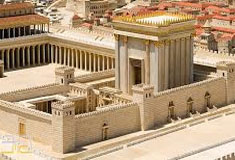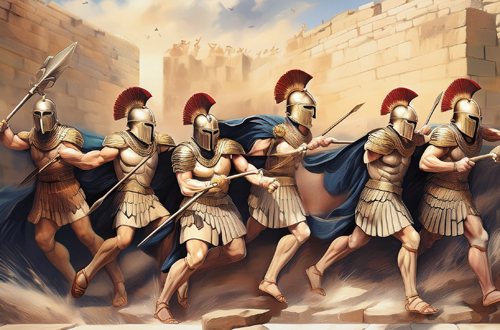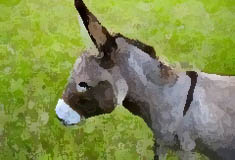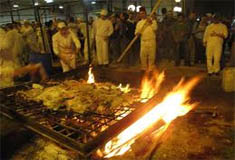Who Will Build the Third Temple? Acting on the Mitzvah vs. Waiting from Heaven
הרב שי טחןיא אב, תשפה05/08/2025After the harsh day of Tisha B’Av, it is an appropriate time to reflect on how the Third Temple will be rebuilt
תגיות:בית המקדשגאולהתשעה באב
After the harsh day of Tisha B’Av, when we mourn the destruction of the Beit HaMikdash and express our yearning for its rebuilding and for the Shechinah to return and dwell among us, it is an appropriate time to reflect on how the Third Temple will be rebuilt. The common notion is that the Third Mikdash will descend from Heaven, fully built. While it is true that this view is expressed by Rashi (Sukah 41a) and Tosafot (Shvuot !5b), what is less well known is that many disagree with this opinion—and even those who do agree often interpret it not literally.
literally.
First we will see that the Midrash Tanchuma appears to support Rashi’s view (KI Tisa 13): Hashem says: In this world, you built a Mishkan and Mikdash surrounded by a physical wall. In the future, I will build the Beit HaMikdash, and it will be surrounded by a wall of fire, as it says: “And I will be for her, says Hashem, a wall of fire” (Zechariah 2:9).
The Zohar also states (Bereshit 28): "The pasuk says (Zechariah 2): 'And I will be for her, says Hashem, a wall of fire surrounding her.' Therefore, on this mountain the Beit HaMikdash will be built by Hashem, and it will endure for all generations. About it, the pasuk says (Haggai 2): 'The glory of this latter House shall be greater than the first.' For the first was built by man—but this one will be built by Hashem. And thus it says (Tehillim 127): 'If Hashem does not build the house, its builders labor in vain.'"
The obvious question on those views is that there is a clear commandment in the Torah to build the Bet Mikdash—a mitzvah that no one disputes or interprets differently. No one explains this mitzvah as a divine promise that the Temple will descend from Heaven on its own. Therefore, by passively waiting for the Mikdash to descend from Heaven, we are failing to fulfill this commandment.
The Rambam writes explicitly: "The commandment is that we are to build the chosen House for service, in which sacrifices will be offered, the fire will burn continuously, and to which all will ascend and gather for the pilgrimage festivals each year. This is as it says: 'And they shall make Me a sanctuary.' And the language of the Sifrei is: 'Three mitzvot were commanded to Israel upon entering the Land—to appoint a king, to build the Bet HaBechirah (Bet Mikdash), and to wipe out the descendants of Amalek.' It is thus clear that building the Bet HaBechirah is an independent mitzvah in its own right."
Indeed the Talmud Yerushalmi states (Megilah 1, 11) that in the future, the nation of Israel will rise and build the Beit HaMikdash. In line with this, the Meiri writes (Sukah 41a) that the Mikdash will be built by human hands. The Rambam is even more specific, stating that it will be the Mashiach who builds it (Ashe’ 20): “The King Mashiach is destined to arise and restore the kingdom of David to its former sovereignty. He will build the Mikdash and gather in the exiles of Israel. In his days, all the laws will be reinstated as they were before: sacrifices will be offered, and the laws of Shemittah and Yovel will be observed in accordance with all their Torah requirements.”
We clearly see a difference of opinion among Chazal: the Midrash Tanchuma states that Hashem will bring down the Mikdash from Heaven, while the Yerushalmi teaches that the people will build it themselves. How can these two views be reconciled?
Some have written that the two views do not actually contradict one another but refer to different scenarios. The Maharam Shik (Yoreh De’ah 213) explains that each source is addressing a different possibility for the redemption. If the Jewish people are redeemed simply because the appointed time has arrived—without merit through their deeds—then the Beit HaMikdash will be built by human hands, as such a redemption is of a lesser spiritual quality, and so too the construction of the Mikdash. However, if the nation of Israel repents and reaches a high spiritual level, then Hashem will hasten the redemption, and the Mikdash will descend from Heaven.
The Mahari”l Diskin offers an original approach to resolve both opinions. He brings (see Aruch LaNer note 362) that most of the Beit HaMikdash will indeed descend from Heaven, as described by Midrash Tanchuma, but the doors of the Mikdash will be built by human hands, which is the scenario referred to by the Yerushalmi.
Rabbi Yaakov Ettlinger (In Aruch LaNer) offers his own explanation of what will happen and says that the nation will build the physical structure, and then Hashem will infuse it with the spiritual Mikdash, where His Shechinah dwells. He writes: "Therefore, it appears to me, that the future Beit HaMikdash will indeed be a physical structure built by human hands. And what is stated, 'Mikdash Hashem, Your hands have established,' which the Midrash Tanchuma interprets as the Mikdash descending from above, refers to a spiritual Temple that will enter into the physical structure—like a soul entering a body. Just as in the Mishkan and the First Temple, the heavenly fire descended and merged with the earthly fire."
This explanation seeks to clarify the well-known idea that there is a Beit HaMikdash above (in the spiritual world), waiting to descend. However, it will not come down until the people take action to build the Mikdash and bring it down through their efforts. Accordingly, we can understand that it is our responsibility to begin the process.
This is the meaning behind the pasuk, "If Hashem does not build the house, its builders labor in vain." There may be builders constructing the Beit HaMikdash, but without Hashem placing His Shechinah within it, the structure remains empty—built in vain.
This idea of a combined effort—where the nation builds the physical structure and Hashem brings down the Shechinah—was already present in the earlier Temples. After the Mishkan was completed in the desert, Moshe Rabenu instructed Aharon to bring a sacrifice. However, when Aharon attempted to do so, the divine fire did not descend—an indication that Hashem's presence had not yet rested upon their work. Only when Moshe joined him were they together able to draw down the heavenly fire (Vayikra 9, 23). This demonstrates that the physical building alone—just stone and wood—is meaningless without the presence of the Shechinah. Simply constructing the structure does not accomplish anything on its own.
Another example was during the time of the inauguration of the First Beit HaMikdash. When king Shlomo built the Temple and sought to bring the Aron (Ark) into the Holy of Holies, the gates clung tightly together and would not open. Shlomo recited twenty-four different songs of supplication, but he was not answered. He then said, "Lift up your heads, O gates," yet still received no response. He repeated, "Lift up your heads, O gates, and let the King of Glory enter. Who is this King of Glory?" but again was not answered. Only when he said, "Hashem, do not turn away the face of Your anointed one; remember the kindnesses of David Your servant," did the gates open, the Aron entered, and fire descended from Heaven.
That is why, when Titus burned the Temple, a voice came down from Heaven saying, “You have burned a burnt house, you have destroyed a destroyed house.” The meaning is that without Hashem’s presence, it is merely wood and stone. What gives the place its sanctity is the presence of Hashem.
But this raises the question: how can we begin building if we are not permitted to enter the site of the Mikdash due to our state of impurity? The answer is that when the time comes, a red heifer (Para Adumah) will be found, and the Kohanim will use its ashes to purify the nation, enabling them to begin the construction of the Temple. According to the Rambam, however, it is the Mashiach who will build the Beit HaMikdash. Consequently, he also explains that the Mashiach will be the one to perform the red heifer ritual as part of that process.
However, as explained, others hold that the entire process will be carried out by us before the arrival of Mashiach. That is why the Midrash says that when Mashiach comes, he will stand on the roof of the Beit HaMikdash—indicating that the Mikdash will have already been built by then.
Let us pray that we merit to witness the rebuilding of the Beit HaMikdash very soon.

First we will see that the Midrash Tanchuma appears to support Rashi’s view (KI Tisa 13): Hashem says: In this world, you built a Mishkan and Mikdash surrounded by a physical wall. In the future, I will build the Beit HaMikdash, and it will be surrounded by a wall of fire, as it says: “And I will be for her, says Hashem, a wall of fire” (Zechariah 2:9).
The Zohar also states (Bereshit 28): "The pasuk says (Zechariah 2): 'And I will be for her, says Hashem, a wall of fire surrounding her.' Therefore, on this mountain the Beit HaMikdash will be built by Hashem, and it will endure for all generations. About it, the pasuk says (Haggai 2): 'The glory of this latter House shall be greater than the first.' For the first was built by man—but this one will be built by Hashem. And thus it says (Tehillim 127): 'If Hashem does not build the house, its builders labor in vain.'"
The obvious question on those views is that there is a clear commandment in the Torah to build the Bet Mikdash—a mitzvah that no one disputes or interprets differently. No one explains this mitzvah as a divine promise that the Temple will descend from Heaven on its own. Therefore, by passively waiting for the Mikdash to descend from Heaven, we are failing to fulfill this commandment.
The Rambam writes explicitly: "The commandment is that we are to build the chosen House for service, in which sacrifices will be offered, the fire will burn continuously, and to which all will ascend and gather for the pilgrimage festivals each year. This is as it says: 'And they shall make Me a sanctuary.' And the language of the Sifrei is: 'Three mitzvot were commanded to Israel upon entering the Land—to appoint a king, to build the Bet HaBechirah (Bet Mikdash), and to wipe out the descendants of Amalek.' It is thus clear that building the Bet HaBechirah is an independent mitzvah in its own right."
Indeed the Talmud Yerushalmi states (Megilah 1, 11) that in the future, the nation of Israel will rise and build the Beit HaMikdash. In line with this, the Meiri writes (Sukah 41a) that the Mikdash will be built by human hands. The Rambam is even more specific, stating that it will be the Mashiach who builds it (Ashe’ 20): “The King Mashiach is destined to arise and restore the kingdom of David to its former sovereignty. He will build the Mikdash and gather in the exiles of Israel. In his days, all the laws will be reinstated as they were before: sacrifices will be offered, and the laws of Shemittah and Yovel will be observed in accordance with all their Torah requirements.”
We clearly see a difference of opinion among Chazal: the Midrash Tanchuma states that Hashem will bring down the Mikdash from Heaven, while the Yerushalmi teaches that the people will build it themselves. How can these two views be reconciled?
Some have written that the two views do not actually contradict one another but refer to different scenarios. The Maharam Shik (Yoreh De’ah 213) explains that each source is addressing a different possibility for the redemption. If the Jewish people are redeemed simply because the appointed time has arrived—without merit through their deeds—then the Beit HaMikdash will be built by human hands, as such a redemption is of a lesser spiritual quality, and so too the construction of the Mikdash. However, if the nation of Israel repents and reaches a high spiritual level, then Hashem will hasten the redemption, and the Mikdash will descend from Heaven.
The Mahari”l Diskin offers an original approach to resolve both opinions. He brings (see Aruch LaNer note 362) that most of the Beit HaMikdash will indeed descend from Heaven, as described by Midrash Tanchuma, but the doors of the Mikdash will be built by human hands, which is the scenario referred to by the Yerushalmi.
Rabbi Yaakov Ettlinger (In Aruch LaNer) offers his own explanation of what will happen and says that the nation will build the physical structure, and then Hashem will infuse it with the spiritual Mikdash, where His Shechinah dwells. He writes: "Therefore, it appears to me, that the future Beit HaMikdash will indeed be a physical structure built by human hands. And what is stated, 'Mikdash Hashem, Your hands have established,' which the Midrash Tanchuma interprets as the Mikdash descending from above, refers to a spiritual Temple that will enter into the physical structure—like a soul entering a body. Just as in the Mishkan and the First Temple, the heavenly fire descended and merged with the earthly fire."
This explanation seeks to clarify the well-known idea that there is a Beit HaMikdash above (in the spiritual world), waiting to descend. However, it will not come down until the people take action to build the Mikdash and bring it down through their efforts. Accordingly, we can understand that it is our responsibility to begin the process.
This is the meaning behind the pasuk, "If Hashem does not build the house, its builders labor in vain." There may be builders constructing the Beit HaMikdash, but without Hashem placing His Shechinah within it, the structure remains empty—built in vain.
This idea of a combined effort—where the nation builds the physical structure and Hashem brings down the Shechinah—was already present in the earlier Temples. After the Mishkan was completed in the desert, Moshe Rabenu instructed Aharon to bring a sacrifice. However, when Aharon attempted to do so, the divine fire did not descend—an indication that Hashem's presence had not yet rested upon their work. Only when Moshe joined him were they together able to draw down the heavenly fire (Vayikra 9, 23). This demonstrates that the physical building alone—just stone and wood—is meaningless without the presence of the Shechinah. Simply constructing the structure does not accomplish anything on its own.
Another example was during the time of the inauguration of the First Beit HaMikdash. When king Shlomo built the Temple and sought to bring the Aron (Ark) into the Holy of Holies, the gates clung tightly together and would not open. Shlomo recited twenty-four different songs of supplication, but he was not answered. He then said, "Lift up your heads, O gates," yet still received no response. He repeated, "Lift up your heads, O gates, and let the King of Glory enter. Who is this King of Glory?" but again was not answered. Only when he said, "Hashem, do not turn away the face of Your anointed one; remember the kindnesses of David Your servant," did the gates open, the Aron entered, and fire descended from Heaven.
That is why, when Titus burned the Temple, a voice came down from Heaven saying, “You have burned a burnt house, you have destroyed a destroyed house.” The meaning is that without Hashem’s presence, it is merely wood and stone. What gives the place its sanctity is the presence of Hashem.
But this raises the question: how can we begin building if we are not permitted to enter the site of the Mikdash due to our state of impurity? The answer is that when the time comes, a red heifer (Para Adumah) will be found, and the Kohanim will use its ashes to purify the nation, enabling them to begin the construction of the Temple. According to the Rambam, however, it is the Mashiach who will build the Beit HaMikdash. Consequently, he also explains that the Mashiach will be the one to perform the red heifer ritual as part of that process.
However, as explained, others hold that the entire process will be carried out by us before the arrival of Mashiach. That is why the Midrash says that when Mashiach comes, he will stand on the roof of the Beit HaMikdash—indicating that the Mikdash will have already been built by then.
Let us pray that we merit to witness the rebuilding of the Beit HaMikdash very soon.
הוסף תגובה
עוד מהרב שי טחן
עוד בנושא מחשבה






